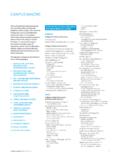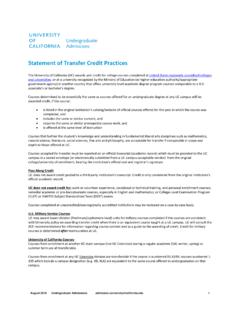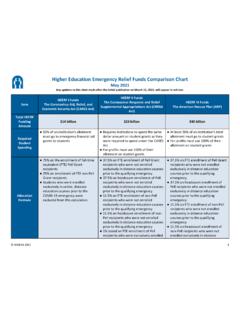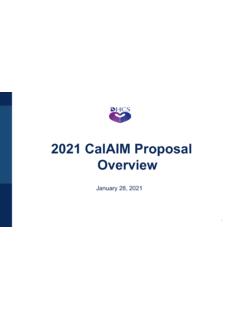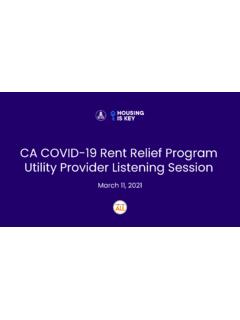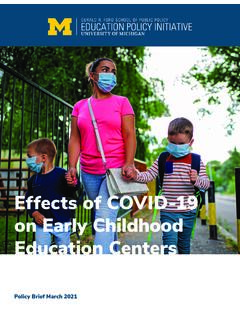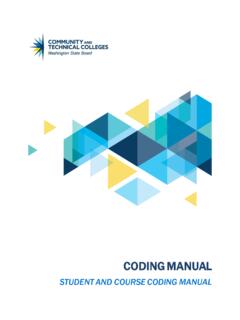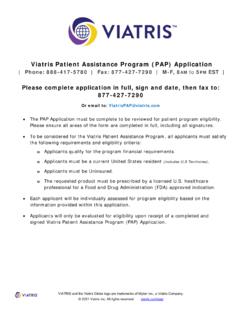Transcription of Dual Enrollment & Homeschool Applicants
1 2. dual Enrollment , or concurrent Enrollment as it is also known, is the practice of allowing a student to be enrolled in two academic institutions at once. Usually, this involves a high school and most often a local community college. The credits usually apply both to high school diploma requirements and college graduation requirements if the courses are UC-transferable. AB- 1467 (2017): The governing board of a community college district may enter into a College and Career Access Pathways (CCAP) partnership with the governing board of a school district for the purpose of offering or expanding dual Enrollment opportunities for students who may not already be college bound or who are underrepresented in higher education, with the goal of developing seamless pathways from high school to community college for career technical education or preparation for transfer, improving high school graduation rates, or helping high school pupils achieve college and career readiness.
2 3. Students and counselors have some common misconceptions about dual Enrollment coursework. Although many dual Enrollment programs are formal agreements between a high school and a community college, the courses are college courses and must be reported as such on the UC application. California high schools cannot add California community college courses to their UC-approved A-G Course List even though instruction may happen on the high school campus with a high school instructor. The courses on the high school's A-G Course List should be courses that are created by the high school (or adopted from an approved program or online course publisher). 5. UC-transferable college courses that fall within the A-G subject areas, including those completed through dual Enrollment , will earn an extra point in the UC freshman admission GPA.
3 Calculation - within our maximum honors points limitations - if completed with a letter grade of C. or better. One college course earns one grade and one honors point in the GPA calculation, even though the single course may meet one year or more of a high school subject requirement. Students who are offered admission to UC will be required to submit an official college transcript for all college courses completed, including courses completed through a dual Enrollment program. This is in addition to the final official high school transcript. UC does not accept pass-along credit for college coursework. 6. If the home schooling curriculum is provided by a regionally accredited school (or approved by the State Board of Education) and the student will receive an official transcript and high school diploma from that school.
4 Students should follow the same admission requirements for students in traditional high schools in California or outside of California (depending on where the student lives). If the student cannot meet these requirements . They can be eligible by meeting requirements for admission by exam. If the student does not meet either the traditional admission requirements or the requirements for admission by exam . They may still be considered for admission by exception. 8. Students who don't meet the minimum requirements may be considered for admission to UC on the strength of their test scores as part of the comprehensive review process. In general, this method of consideration is designed for students who, through no fault of their own, have been unable to meet the regular subject requirements and/or earn a high school diploma To be considered, students must take either the ACT with Writing or the SAT.
5 With Essay (or SAT Reasoning if the student graduated prior to 2020) as well as two SAT Subject Tests (in different disciplines), and earn a minimum UC Score calculated from their exam scores. Convert test scores to UC scores at: Minimum UC Score total: 410 (residents), 425 (nonresidents). Additionally, students must achieve a minimum UC score of 63 on each component of the exams *Students may not use an SAT Subject Test to meet these requirements if they have completed a transferable college course with a grade of C or better in that subject. 9. Each year, a small number of students who have the ability and potential to succeed at UC but don't meet our academic requirements are admitted by exception. Students are automatically considered for Admission by Exception and cannot ask to be reviewed for exception.
6 10. Students are asked to list all high schools and any colleges/universities attended, and the diploma or certification they will receive. Students who take courses through an online provider, a correspondence school or other accredited program, must enter the institution's school name, dates of attendance and any certificate(s) received (Students don't get to start over or ignore any pieces of their record). Otherwise, students will enter Home School/Home Study as the school name. For diploma/certificate received, select either GED or Certificate of Proficiency if applicable, or select "Other" and type "None.". 11. An institution must hold regional accreditation as a diploma-granting school in order to qualify for an A-G Course List. Most traditional home schools do not meet that criteria.
7 However, some independent study schools do have course lists and must be listed separately on the application. 12. Students who earn a GED or CHSPE must also have completed A-G requirements. The equivalent of a high school diploma alone is not sufficient. Without A-G. requirements, the student would still need to be eligible by exam or admitted by exception. Home school Applicants are generally reviewed just as all other Applicants are reviewed. Home school Applicants who appear to be selective for the campus are reviewed again, usually by senior staff or Directors. Items reviewed: Context/Circumstances GPA recognition Rigor of curriculum 14. We're interested not only in the student's strengths as a scholar, but also their leadership qualities, passions and contributions to their family and community UC Scout Reflecting the university's commitment to equity and access, UC Scout works to ensure all California students have access to a high quality college preparatory curriculum, no matter where they live and attend school.
8 With $4 million in state funding from the governor's 2016-17 budget, the program added and improved dozens of free online courses, from world history and law to engineering and 3-D design. Now offers 65 online classes, including each of those required to fulfill the A-G requirements for admission to UC and California State University, as well as 26 Advanced Placement (AP) classes. Scout offers three different types of courses: Basic, Plus, and On Demand. In Basic and Plus, your school provides the teacher. In On Demand, Scout provides the teacher. Course(s) shown on high school transcript A-G course List View online schools with approved A-G course lists Filter by school type > online 16. Do dual Enrollment classes affect a student's UC-GPA? Only UC courses affect the UC GPA. However, dual Enrollment courses that meet A-G requirements will be included in the GPA calculation for admission purposes.
9 Do all Universities accept dual Enrollment credit? Not necessarily. Every system has their own policies. CA CC courses OK for credit can be found on Courses taken at 4-year institutions or outside of CA are awarded credit based on course content. Accredited courses must be similar to those offered within UC in depth, breadth, and level. Are HS courses online OK? Online is a teaching methodology and courses are OK based on course content. How are college units transferred to UC? Students submit official transcripts from all schools attended and then the campus assesses the student's record all together (once all transcripts are received). Credit is generally awarded before school starts, but sometimes the credit process goes into the fall quarter. More info on credit policy: Should students with lots of dual Enrollment apply as a transfer or a freshman?
10 Student may NOT choose whether to apply as a freshman or transfer. A freshman applicant is a student who has graduated from (or is still in) high school and who has not enrolled in a regular (non-summer) term at any college or university following graduation. Students who attend a college or university in the summer term immediately after graduating from high school are considered freshman Applicants . Students who complete college/university courses while in high school are also still considered freshman Applicants , regardless of the number of credits earned. Applicants must meet minimum requirements no later than the date of high school graduation. 18.




